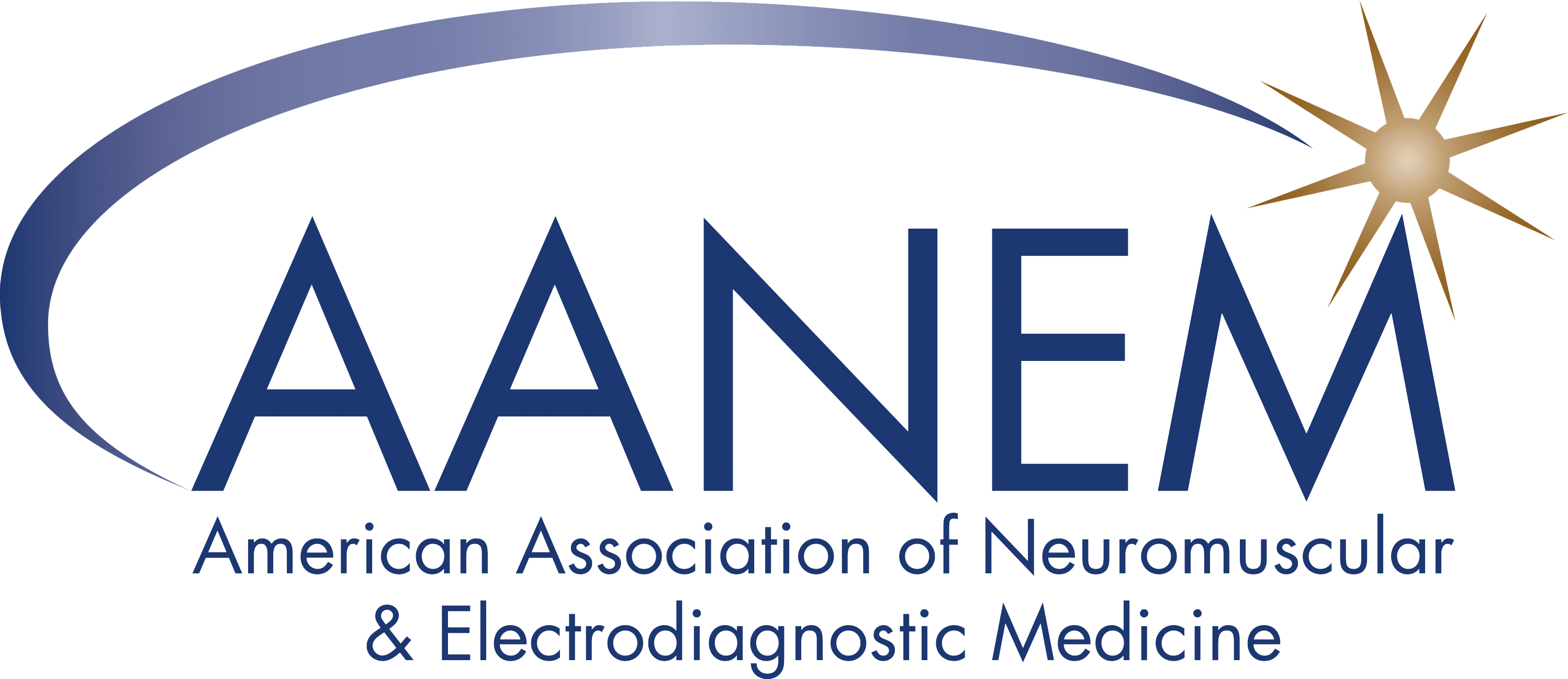AANEM Connect

Join this vibrant community of professionals eager to exchange ideas, share resources, and engage in meaningful discussions. Use this platform as a sounding board to seek advice for navigating challenging cases or career decisions, and receive expert guidance from generous peers who want to help you succeed.
Case Question: Re-attachment of post-op muscle / fascia tear?
CLINICAL HISTORY
79 year old left handed male with PMH of prior carpal tunnel releases 2013 who began dropping things from both hands 2019 and suffered associated right neck shoulder pai. Epidural offered 2 days of pain relief. MRI 8/2021 revealed "multilevel severe DDD/spondylosis with extensive flowing anterior osteophytosis suggestive of DISH and mild abnormal cord signal at C5-6 suggesting an element of cord atrophy." His neurologist sent him to a spine surgeon who documented rt deltoid/biceps/triceps/grip and finger flexor weakness with right thena atrophy. For this reason 10/2021 he underwent C7-T1 and T2-3 lami and C5-T3 posterior fusion.
The pain has resolved but he has noted winging of his scapula, inability to comb hair, elevate arm and use fingers rt>lt.
CLINICAL EXAM
On exam, his CTR incisions are strangely distal in the palm (?). He has an extensive cervical incisional line which is healed. Right grip, D3 DIP flexion, and bilateral D1/5 abduction are 4/5. Right D3 DIP flexion 3/5. Otherwise 5/5 bilateral humeral ext rotation, shrug, and elbow/wrist extension/flexion.
At rest the scapulae are nearly symmetric. With forward flexion more than abduction, there is medial deviation and prominence of the lower medial border/angle of the scapula. He is unable to get to 90 degrees with these due to weakness but this is correctable with assisted scapular depression by the examiner. NO pain reported with these motions.
ELECTRODIAGNOSTIC FINDINGS
There were no borderline findings. SNAPs and CMAPs in ulnar nerves were normal. CMAPs bilat MEDIANs revealed prolonged onsets, mildly slowed NCVs, and normal left but severely diminished right amplitudes without significant drops in amplitude with proximal stimulations. Meidan SNAPs also revealed prolonged latencies, slowed conduction velocities at the wrists, and normal left amplitudes but significant drop in amplitude when going from palm to wrist.
NEE: Parapsinals were avoided due to recent incision. Fibs/PSWs in bilat FDI, rt EIP/Triceps (latter two had diminished recruitment). Otherwise NORMAL bilateral delboids, biceps, pronator teres. NORMAL left triceps, trapezius, Rhomboid Major, Infraspinatus. I did attempt needling the SERRATUS anterior but it was my first time doing so since residency. Whatever i needled was normal
ELECTRODIAGNOSTIC IMPRESSION:
This is an abnormal study. There is EDx evidence at this time of bilat rt>lt lower cervical (possibly C8) radiculopathy. There is EDx evidence at this time of bilat demyelinating sensorimotor median neuropathies at the wrists.
CLINICAL IMPRESSION
IMPAIRED HAND STRENGTH/DEXTERITY: from an electrodiagnostic perspective, there appears to be a prominent bilateral C8 radiculopathy superimposed over bilateral median mononeuropathy which is compromising his hand function. The findings today do not support a plexus lesion of the C8 ramus, lower trunk, or medial cord. Pre-operatively, this was also evident. Hand therapy to improve strength and function are indicated while awaiting the results of neural regeneration/reinnervation.
LEFT SCAPULAR WINGING: clinically presents with compromised trapezius more than serratus or rhomboid involvement. Spinal accessory, suprascapular, and generally upper cervical roots (C5-6) and
upper plexus (C5/6 rami, upper trunk) appear unaffected on today’s electrodiagnostic testing. On inspection, the location of the extensive cervical spine scar suggests that there could be a compromised trapezius from direct incisional injury to the trapezius. This could certainly explain the winging and, after consideration for potential reattachment by the surgeon, should be addressed with scapular stabilizer strengthening in physical therapy. Despite this and the findings on physical exam, serratus anterior (long thoracic nerve) remains on the differential and could be further evaluated by bringing the patient back in for needle EMG of the serratus anterior muscle.
QUESTION FOR AANEM COMMUNITY
The surgeon reviewed the MRI and was able to confirm that there are about 2 inches of trapezial fascia and muscle that have retracted away from the spinous processes (per surgeon, this is a very small percentage of the incision). A reputable surgeon, he has done numerous laminectomies with extensive incisions and never faced this. I have never heard of this before. If anyone on the forum has, what did you do for them?
If not, the question is, 3 months out, would it be better to just start working on scapular stabilizaiton in therapy or would there be value in re-attaching the trapezial fibers. The downside to the latter is delay of rehabilitation while healing and subjecting him to potential complications of a second surgery.
please don't be shy and thanks in advance
In order to comment on posts and view posts in their entirety, please login with your AANEM member account information.
I enjoy participating in the AANEM Connect Forum for a number of reasons. There are very fundamental questions posed on a frequent basis that cause me to pause and ask myself, ‘Why didn’t I think of that?’ Also, I continue to learn new things when others contribute their thoughts and experiences. Connect is an excellent opportunity for members to interact and to address any topic, including those that may not be discussed at an annual meeting or journal article.
Daniel Dumitru, MD, PhD
